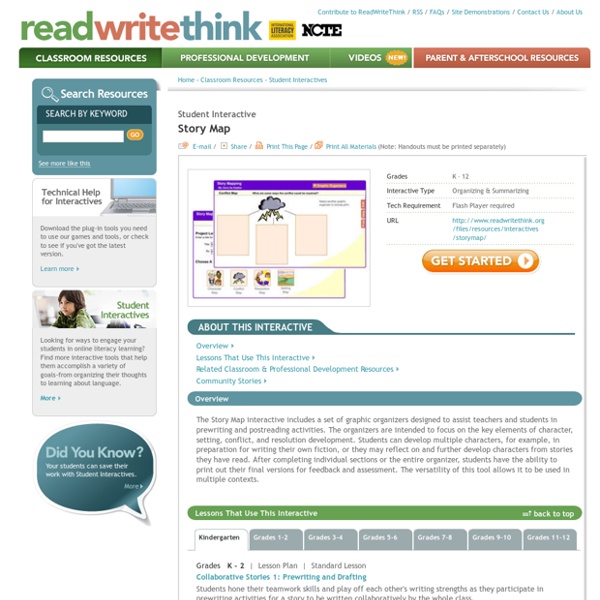Literary Elements Map
An updated version of the Story Map, this interactive best suits secondary students in literary study. The tool includes a set of graphic organizers designed to assist teachers and students in prewriting and postreading activities, focusing on the key elements of character, setting, conflict, and resolution development (shown at left). As with the Story Map, this interactive can be used in multiple contexts, whether they be author studies, genre studies, or thematic units, among others. Students can map out the key literary elements for a variety purposes, including response to literature or as a prewriting activity when composing their own fiction. After completing individual sections or the entire organizer, students have the ability to print out their final versions for feedback and assessment.
The Coop Times
All stories written in this game are automatically published to The Coop Times newspaper - read them here. By Adam Carr - @2HitAdam with special thanks to Omeed Dariani, Jola Pez and Matt Carr for submitting extra prompts! Music "Big Fish" and "Full Hand" by playonloop.com CC BY 3.0
How to turn your photo into movie-like effect using Photoshop? « ebin
What you need to have: Adobe Photoshop What you will learn: colour mood adjustments + depth of field effect + film effect PS: ⌘ key for Mac users / CTRL key for Windows users Colour mood adjustments 1. Adjust the Hue/Saturation: ⌘U/CTRL-U 2. Adjust the brightness and contrast: Menu > Image > Adjustments > Exposure…
Persuasion Map: élaborer le plan d'une argumentation
Grades 9 – 12 | Lesson Plan | Standard Lesson Demonstrating Understanding of Richard Wright's Rite of Passage Students use the elements of persuasion for a specific audience to demonstrate their understanding of Richard Wright's accessible and engaging coming-of-age novel, Rite of Passage. Grades 6 – 12 | Lesson Plan Persuade Me in Five Slides! Creating Persuasive Digital Stories
Cube Creator
Summarizing information is an important postreading and prewriting activity that helps students synthesize what they have learned. The interactive Cube Creator offers four options: Bio Cube: This option allows students to develop an outline of a person whose biography or autobiography they have just read; it can also be used before students write their own autobiography. Specific prompts ask students to describe a person's significance, background, and personality. Mystery Cube: Use this option to help your students sort out the clues in their favorite mysteries or develop outlines for their own stories.
Drama Map
Download the plug-in tools you need to use our games and tools, or check to see if you've got the latest version. Learn more Looking for ways to engage your students in online literacy learning? Find more interactive tools that help them accomplish a variety of goals-from organizing their thoughts to learning about language. More
Interactives on ReadWriteThink
Find content from Thinkfinity Partners using a visual bookmarking and sharing tool. More Your students can save their work with Student Interactives. More Home › Results from ReadWriteThink 1-10 of 21 Results from ReadWriteThink
Blend Photos Like A Hollywood Movie Poster
Written by Steve Patterson. In this Photoshop Effects tutorial, we’re going to learn how to blend photos together like a Hollywood movie poster. Blending photos is easy to do in Photoshop thanks to layer masks, yet finding two photos with similar colors isn’t always so easy, and you end up with a photo effect that doesn’t really seem to look right because the colors don’t match. With this technique, you don’t need to worry about the colors in the images at all because we’ll be removing them completely and adding our own colors to blend the two photos seamlessly.




Students read a story and fill the graphic organizer in the different conflicts that occurred during it. Students are divided in groups and each group is assigned to work on the different elements of a story. One group works on the characters, other on the plot and so on. It is useful for summarizing and identifying the elements of a story. by gamsdf1977 Oct 22
This tool can be used for writing about what students read and for post reading follow up. There are multiple map types such as character and conflict. Maps are savable and printable. Teaching tips great for prewrinting and post reading can be used individual or in groups multiple maps provides many opportunities for learning great for summarizing and finding story elements by k3nolen Sep 28